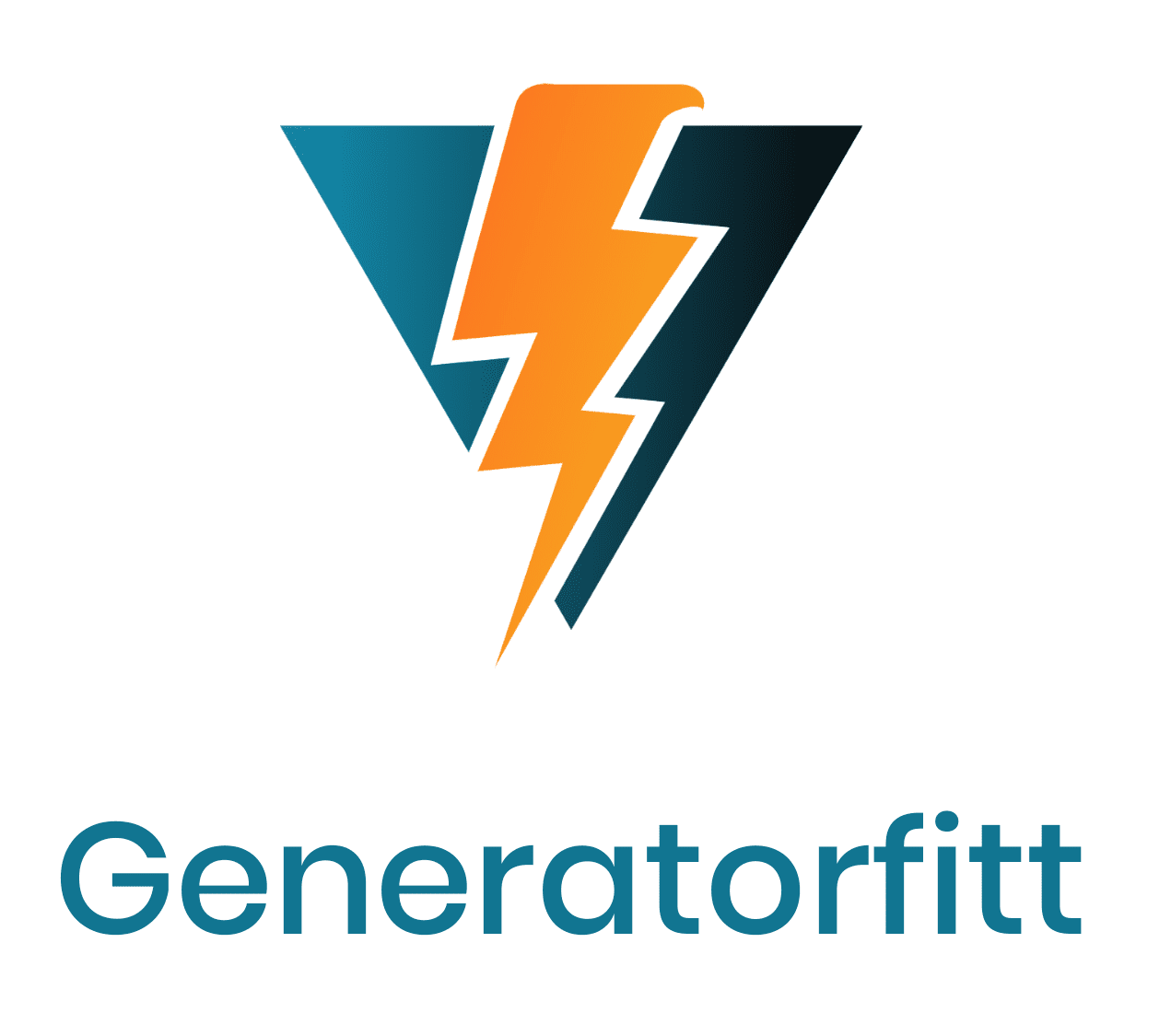Top 7 Diy Solar Generator (Best Buying Guide) In 2023
In today’s world, the importance of renewable energy cannot be overstated. As we strive to reduce our carbon footprint and become more self-reliant, DIY solar generators have gained immense popularity.
These versatile devices harness the power of the sun to generate electricity, providing a sustainable and cost-effective energy solution for both emergencies and everyday use.
In this comprehensive guide, we will walk you through the process of building your very own DIY-solar generator, step by step.

Introduction to Solar Generators
Solar generators are a brilliant innovation that allows you to generate electricity using sunlight. They are versatile, eco-friendly, and a valuable addition to any household.
In this guide, we will provide you with detailed instructions on how to create your own DIY-solar generator.
Whether you want to reduce your electricity bills, be prepared for power outages, or simply embrace sustainable living, this guide has got you covered.
Top 7 Diy-Solar Generator Picks
Here are the Top 7 Diy-Solar Generator Reviews and Features:
Jackery Solar Generator 1000, 1002Wh Capacity with 2xSolarSaga 100W Solar Panels

The Jackery Solar Generator 1000, combined with 2x SolarSaga 100W Solar Panels, is a portable and efficient solar power solution. Here are some key features and benefits:
Key Features
- High Capacity: The Jackery Solar Generator 1000 has a 1002Wh capacity, making it capable of powering a variety of devices and appliances, from smartphones and laptops to small kitchen appliances and medical devices during power outages or outdoor adventures.
- Solar Panels Included: The package includes two SolarSaga 100W solar panels, which can harness solar energy to recharge the generator’s battery. This feature provides an eco-friendly and sustainable way to maintain power when off the grid.
- Portable Design: The system is designed for portability, with a convenient carrying handle and a compact form factor, making it suitable for camping, road trips, and emergency situations.
- Multiple Charging Options: Besides solar charging, the Jackery Solar Generator 1000 can be charged via AC outlets or 12V car sockets, offering versatility and flexibility in how you recharge it.
- Quiet and Emission-Free: Unlike traditional gas generators, this solar generator is silent and produces no emissions, creating a clean and quiet power source.
- User-Friendly: It features easy-to-read LCD screens and multiple output ports for various devices, making it user-friendly and versatile.
- Safety Features: The Jackery Solar Generator includes safety features like battery management systems (BMS) to protect against overcharging, short circuits, and overheating.
- Expandable: You can expand the system by connecting additional solar panels if you need more power capacity.
Zendure Solar Generator, Portable Power Station SuperBase V 4.6KWh Expandable Home Battery

The Zendure SuperBase V is a portable power station and home battery designed for a wide range of applications. Here are some key features and benefits of the Zendure Solar Generator SuperBase V 4.6KWh:
Key Features
- High Capacity: With a 4.6KWh capacity, this power station can provide substantial electricity for various devices and appliances, making it suitable for use during power outages, camping trips, and outdoor events, and as a backup power source for home appliances.
- Expandable: The SuperBase V is expandable, meaning you can increase its capacity by adding additional batteries, allowing for even more power storage if needed.
- Solar Charging: It supports solar charging, enabling you to harness energy from the sun to recharge the battery. This feature is eco-friendly and useful for off-grid scenarios.
- Multiple Output Options: The power station offers a variety of output options, including AC outlets, USB ports, and DC outputs, making it compatible with a wide range of devices and appliances.
- Home Backup: With its high capacity, the SuperBase V can serve as a backup power source for essential home appliances during power outages, ensuring you have access to electricity when needed.
- Portability: While it’s not as portable as smaller power stations, the SuperBase V is still relatively mobile, thanks to its built-in wheels and retractable handle, making it easier to move around.
- Safety Features: It includes safety features such as overcharge protection, short-circuit protection, and temperature control to ensure safe operation.
- LCD Display: The LCD display provides real-time information about the battery’s status, including remaining capacity and input/output power.
BLUETTI AC200P Portable Power Station, 2000Wh LiFePO4 Battery Backup w/ 6 2000W

The BLUETTI AC200P Portable Power Station is a high-capacity and versatile power station designed to provide backup power in various situations. Here are some key features and specifications:
Key Features
- High Capacity: The power station boasts a 2000Wh (watt-hour) LiFePO4 battery, which is known for its safety, long lifespan, and stability.
- Multiple Output Ports: It offers a range of output options, including six AC outlets with a 2000W (continuous) and 4800W (peak) rating, allowing you to power multiple devices and appliances simultaneously.
- Solar Charging: The AC200P supports solar charging, making it suitable for off-grid and outdoor use. You can connect solar panels to harness renewable energy for recharging.
- Various DC and USB Outputs: In addition to the AC outlets, it features multiple DC outputs (12V and 24V) and USB ports (including USB-C) for charging and powering a variety of devices and gadgets.
- Expandable: You have the option to expand the power station’s capacity by connecting additional solar panels and batteries for increased power storage.
- LCD Touchscreen: The integrated LCD touchscreen provides real-time monitoring of battery status, input/output power, and other important information.
- Safety Features: The BLUETTI AC200P includes safety features such as battery management systems (BMS) to protect against overcharging, short circuits, and overheating.
- Remote Control: It comes with a remote control for convenient operation from a distance.
- Portability: While it’s not as portable as smaller power stations due to its weight and size, it features a sturdy handle and wheels for easier transport.
Powkey Solar Generator with Panel, 146Wh/200W Portable Power Station with Solar Panel 40W

The Powkey Solar Generator with Panel is a portable power station designed for outdoor and off-grid power needs. Here are some key features and specifications:
Key Features
- Battery Capacity: The power station has a 146Wh (watt-hour) battery capacity, which is suitable for charging and powering small electronic devices, such as smartphones, laptops, LED lights, and CPAP machines.
- Solar Panel Included: The package includes a 40W solar panel, which can be used to recharge the power station’s battery using solar energy. This feature makes it an eco-friendly and self-sustaining power source for outdoor adventures or emergency situations.
- Multiple Output Ports: It offers various output options, including AC outlets, DC outputs, USB ports, and a cigarette lighter socket, allowing you to charge and power a variety of devices simultaneously.
- Compact and Portable: The power station is designed for portability, making it easy to carry during camping trips, hiking, or other outdoor activities. It also features a sturdy handle for convenient transport.
- LCD Display: The integrated LCD display provides information on battery status, input/output power, and other essential data.
- Safety Features: Powkey typically includes safety features like overcharge protection, short-circuit protection, and temperature control to ensure safe operation.
- Recharge Options: Besides solar charging, you can recharge the power station using an AC wall outlet or a 12V car adapter, providing flexibility in how you recharge it.
- Inverter: The power station includes a 200W inverter, allowing you to power small appliances and devices that require standard AC power.
- Capacity and Usage: The Powkey Solar Generator is best suited for charging and powering small to medium-sized electronics and providing power for outdoor activities, camping, and emergency situations.
Baldr Solar Generator Kit, 330W Portable Power Station with 120W Solar Panel

The Baldr Solar Generator Kit is a portable power station bundled with a 120W solar panel, designed to provide off-grid and emergency power solutions. Here are some key features and specifications:
Key Features
- Power Station Capacity: The power station has a 330W capacity, which is suitable for charging and powering a variety of small to medium-sized electronic devices, including smartphones, laptops, lights, fans, and small appliances.
- Included Solar Panel: The kit includes a solar panel, which can be used to recharge the power station’s battery using solar energy. This feature enables eco-friendly and self-sustained power generation in outdoor settings or during power outages.
- Multiple Output Ports: It offers various output options, including AC outlets, DC outputs, USB ports, and a cigarette lighter socket, allowing you to charge and power multiple devices simultaneously.
- Compact and Portable: The power station is designed for portability, making it suitable for camping trips, outdoor activities, and emergency situations. It typically features a handle for easy transport.
- LCD Display: The built-in LCD display provides information on battery status, input/output power, and other essential data for monitoring.
- Safety Features: Baldr power stations often include safety features like overcharge protection, short-circuit protection, and temperature control to ensure safe operation.
- Recharge Options: Apart from solar charging, you can recharge the power station using an AC wall outlet or a 12V car adapter, providing flexibility in how you recharge it.
- Inverter: The power station usually includes an inverter to provide standard AC power for small appliances and devices.
- Capacity and Usage: The Baldr Solar Generator Kit is suitable for a range of applications, such as camping, outdoor adventures, backup power for essential devices during power outages, and providing power for small appliances and electronics.
Geneverse 1002Wh (1×2) Solar Generator Bundle: 1X HomePower ONE Portable Power Station

The Geneverse 1002Wh Solar Generator Bundle includes the HomePower ONE Portable Power Station, which is designed to provide a reliable source of portable and off-grid power. Here’s an overview of this bundle:
Key Features
- Battery Capacity: The power station has a substantial 1002Wh (watt-hour) capacity, making it suitable for powering various devices and appliances, from small electronics like smartphones and laptops to larger items like CPAP machines, mini-fridges, and more.
- Solar Charging: The bundle includes one or two solar panels, depending on the “1×2” reference, which can be used to recharge the HomePower ONE Portable Power Station using solar energy. This feature allows for eco-friendly and sustainable power generation, making it suitable for outdoor adventures and emergency backup.
- Multiple Output Ports: The power station offers a variety of output options, including AC outlets, DC outputs, USB ports, and more, enabling you to charge and power multiple devices simultaneously.
- Portability: The power station is designed with portability in mind, featuring a handle and a compact form factor for easy transport during camping trips, outdoor activities, and emergency situations.
- LCD Display: An integrated LCD display provides real-time information about battery status, input/output power, and other essential data for monitoring.
- Safety Features: Geneverse power stations typically include safety features like overcharge protection, short-circuit protection, and temperature control to ensure safe operation.
- Expandability: Depending on the “1×2” reference, this bundle may allow for the expansion of the system by adding an extra solar panel for increased power generation and faster recharging.
Runhood Solar Generator Rallye 600 Pro, 1296Wh Portable Power Station

The Runhood Solar Generator Rallye 600 Pro is a portable power station designed to provide reliable off-grid and emergency power. Here are some key features and specifications:
Key Features
- High Capacity: The power station boasts a substantial 1296Wh (watt-hour) capacity, making it suitable for charging and powering various electronic devices and appliances, from small gadgets to larger items like laptops, mini-fridges, and medical equipment.
- Solar Charging: The Rallye 600 Pro supports solar charging, allowing you to recharge the power station’s battery using solar panels. This feature makes it an eco-friendly and self-sustained power source for outdoor adventures or power backup during emergencies.
- Multiple Output Ports: It offers various output options, including AC outlets, DC outputs, USB ports, and a cigarette lighter socket, providing flexibility for charging and powering multiple devices simultaneously.
- Compact and Portable: The power station is designed for portability, featuring a handle and a compact form factor, making it convenient for use during camping trips, outdoor activities, and power outages.
- LCD Display: An integrated LCD display provides real-time information about battery status, input/output power, and other essential data for monitoring.
- Safety Features: Runhood power stations typically include safety features such as overcharge protection, short-circuit protection, and temperature control to ensure safe operation.
- Recharge Options: In addition to solar charging, you can recharge the power station using an AC wall outlet or a 12V car adapter, offering multiple methods for recharging based on your needs.
- Inverter: The power station may include an inverter to provide standard AC power for small appliances and devices that require AC power.
- Usage Scenarios: The Rallye 600 Pro is suitable for various applications, including camping, outdoor adventures, emergency power backup for essential devices, and providing power for small to medium-sized electronics and appliances.
Understanding the Basics
Solar Panels: The Heart of the System
At the core of any solar generator are solar panels. These devices are responsible for converting sunlight into electricity.
Solar panels consist of photovoltaic cells that absorb sunlight and convert it into direct current (DC) electricity.
Batteries: Storing the Sun’s Energy
To ensure a continuous power supply, you’ll need deep-cycle batteries. These batteries store the excess electricity generated by your solar panels. When the sun isn’t shining, you can draw power from the batteries to keep your devices running.
Components You’ll Need
Solar Panels
The number and size of solar panels you require will depend on your energy needs. High-efficiency panels are a great choice for maximizing energy production.
Charge Controller
A charge controller regulates the voltage and current coming from the solar panels to prevent overcharging and damage to the batteries.
Deep Cycle Batteries
Deep cycle batteries are designed to withstand repeated charging and discharging cycles, making them ideal for solar applications.
Inverter
An inverter converts the DC electricity stored in the batteries into usable AC electricity that can power your appliances and devices.
Designing Your Solar Generator
To design your solar generator:
- Calculate your power needs.
- Select quality solar panels, batteries, and an inverter.
- Determine battery capacity and DoD.
- Design the solar panel array based on location and sunlight hours.
Calculating Your Energy Needs
Before you begin, calculate your daily energy consumption to determine the size of the system you need. Consider the wattage of your appliances and the number of hours you plan to use them.
Sizing Your Components
Select components that match your energy requirements. Ensure that the solar panels, batteries, and inverter are compatible and can handle the load.
Building Your Solar Generator
To build your solar generator:
- Mount solar panels for sunlight exposure.
- Connect panels to a charge controller.
- Link the charge controller to a battery bank.
- Install an inverter for AC power.
- Add fuses and disconnects for safety.
- Test the system and monitor performance.
- Prioritize safety and code compliance.
Mounting the Solar Panels
Position your solar panels to maximize exposure to sunlight. This typically involves mounting them on your roof or in a sunny area of your property.
Connecting the Charge Controller
Install the charge controller between the solar panels and the batteries to regulate the charging process.
Wiring the Batteries
Connect the deep cycle batteries in a series or parallel configuration, depending on your voltage and capacity requirements.
Installing the Inverter
Attach the inverter to the battery bank and connect it to your electrical panel to distribute power throughout your home.
Testing and Maintenance
Testing and maintenance for your solar generator:
- Regular Testing: Conduct routine tests to ensure all components are working correctly. Verify charging, battery health, and inverter functionality.
- Battery Maintenance: Check the battery’s state of charge, and water levels (for lead-acid batteries), and ensure proper ventilation.
- Clean Solar Panels: Keep solar panels clean and free of debris to maximize energy production.
- Inspect Wiring: Regularly inspect wiring and connections for wear, damage, or loose connections.
- Monitor Performance: Use monitoring tools to track system performance, including energy production and consumption.
- Emergency Backup: Verify that your generator is ready for use during emergencies.
- Safety First: Always prioritize safety during maintenance and follow manufacturer recommendations.
Checking for Proper Functionality
After installation, test your system to ensure it’s generating electricity correctly. Regularly monitor its performance to detect any issues early.
Routine Maintenance Tips
Keep your solar panels clean and free of debris. Check battery connections and fluid levels periodically. Replace batteries as needed.
Benefits of a DIY Solar Generator
Here are Benefits of a DIY Solar Generator:
Energy Independence
With a DIY-solar generator, you can reduce your reliance on the grid and become more self-sufficient in generating electricity.
Cost Savings
Over time, your solar generator will pay for itself through reduced energy bills and potential incentives.
Emergency Preparedness
In times of power outages or emergencies, your solar generator can provide essential backup power for your home.
Environmental Impact
Reducing Your Carbon Footprint
By generating clean energy from the sun, you’ll significantly reduce your carbon emissions.
Sustainable Living
Embrace a sustainable lifestyle by harnessing the power of renewable energy.
Common Mistakes to Avoid
Underestimating Energy Needs
Ensure you size your solar generator correctly to meet your energy demands.
Neglecting Battery Maintenance
Regularly maintain your batteries to prolong their lifespan and efficiency.
Poorly Positioned Solar Panels
Maximize energy production by positioning your solar panels for optimal sun exposure.
Troubleshooting
Troubleshooting a DIY-solar generator involves identifying and resolving issues that may arise in the system. Here’s a concise guide to help you troubleshoot common problems:
- No Power Output:
- Check if the solar panels are receiving sunlight.
- Ensure the charge controller is functioning correctly.
- Verify the battery connections and charge level.
- Examine the inverter for faults or overloads.
- Low Power Output:
- Clean the solar panels to remove dirt or debris.
- Confirm that the panels are properly oriented and angled.
- Check for shading on the panels.
- Test the charge controller and inverter for performance issues.
- Battery Not Charging:
- Inspect battery connections for loose or corroded terminals.
- Check the charge controller for faults or error codes.
- Ensure the panels are producing electricity.
- Inverter Issues:
- Check the inverter’s status LEDs or display for error messages.
- Verify proper connections between the inverter and battery bank.
- Test the inverter with a different load to rule out appliance issues.
- Battery Problems:
- Monitor the battery voltage and capacity.
- Top up water levels (if using lead-acid batteries).
- Check for sulfation or other battery issues.
- Confirm the charge controller settings are appropriate for your battery type.
- Safety Concerns:
- If you notice overheating, burning smells, or other safety hazards, disconnect the system immediately.
- Ensure all connections are secure and correctly wired to prevent electrical accidents.
- Consult Manuals and Resources:
- Refer to the user manuals for your components for troubleshooting guidance.
- Utilize online resources, and forums, or consult experts for specific issues beyond your expertise.
Safety Precautions
When building a DIY-solar generator, it’s crucial to prioritize safety to prevent accidents and ensure the longevity of your system. Here are some key safety precautions to follow:
- Educate Yourself: Gain a good understanding of electrical systems, solar panel installation, and battery technology before starting your DIY project. Take online courses or seek guidance from experts if needed.
- Use Appropriate Components: Select high-quality and reputable solar panels, batteries, charge controllers, and inverters. Ensure they are rated for the voltage and capacity you need.
- Wiring Safety:
- Use proper wiring and connectors designed for solar systems.
- Install fuses and circuit breakers to protect against overcurrent and short circuits.
- Follow a wiring diagram or instructions provided with your components.
- Grounding: Properly ground your solar generator to minimize the risk of electrical shock. Consult local electrical codes for grounding requirements.
- Ventilation: If using lead-acid batteries, ensure they are well-ventilated to dissipate gases safely. Lithium-ion batteries typically don’t require ventilation but follow manufacturer recommendations.
- Overload Protection: Install overload protection devices to prevent excessive current flow that can damage your system or start a fire.
- Safe Installation: Mount solar panels securely and at the appropriate angle, following manufacturer guidelines. Ensure proper weatherproofing to protect components from the elements.
- Disconnect Switches: Include disconnect switches or breakers to isolate your solar generator during maintenance or emergencies.
- Battery Safety:
- If using lead-acid batteries, handle sulfuric acid with extreme caution and wear appropriate protective gear.
- Keep batteries away from flammable materials and open flames.
- Store and handle lithium-ion batteries per manufacturer recommendations.
- Fire Safety: Have fire extinguishers and smoke detectors in the vicinity of your solar generator, especially if it’s located indoors.
- Regular Inspections: Conduct routine inspections to check for loose connections, wear, and any signs of damage.
- Emergency Shutdown: Know how to shut down your solar generator quickly in case of an emergency or malfunction.
- Protect Against Theft and Vandalism: If the solar generator is installed outdoors, take measures to secure it against theft and vandalism.
- Comply with Local Codes: Familiarize yourself with local electrical codes and regulations, and ensure your DIY-solar generators installation complies with them.
- Seek Professional Assistance: If you’re uncertain about any aspect of your DIY project or electrical work, consider consulting with a licensed electrician or solar professional for guidance.
Conclusion
In conclusion, building a Diy-solar generator can be a rewarding and sustainable project, providing clean and renewable energy for various purposes.
However, safety should always be a top priority throughout the design, construction, and maintenance phases.
Educate yourself, use quality components, follow proper wiring practices, and adhere to local codes and regulations.
Regular inspections and responsible battery handling are key to a successful and safe DIY-solar generator.
With careful planning and attention to safety, you can create an efficient and reliable solar power system that meets your energy needs while contributing to a more sustainable future.
Hi, I am Brines Loe and I am an Expert in Generators I have Experience in This Field I want to Help You About This Website! Welcome to our generator (Outdoor) Guide blog! We are dedicated to providing you with the latest information and tips on outdoor generators, ensuring that you have the knowledge you need to make informed decisions about which generator is right for you.






